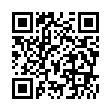
















medical outcomes
QL-Recorder?

The Quality-of-Life-Recorder
Crash course: Concept • Technology • Live Demo
The concept
of the QL-Recorder envisions a device that enables researchers or physicians to collect data using self-administered patient questionnaires.
It's special ease of use and immediate availability of results are key points in its design.
Traditional approach
Traditionally, collecting data from patients included the use of paper questionnaires. At a later time, data had to be transferred into a computer manually or using optical scanners. Only afterwards could data be checked and further automatic processing take place. All this consumes material, work time, is prone to errors and missing data. It would require a substantial effort to provide results "immediatly", e.g. for a same day consultation.
New possibilities
The Quality-of-Life-Recorder, in contrast, processes the patient's answers immediately - and automatically: They can be checked for completeness, results can be calculated and transmitted as PDF or in another format to other systems. Automatic printouts are possible as well as faxes, even to multiple targets - including the graphical display of data over time.
Internally, data are stored in a format designed to be standardised, though supporting all kinds of questionnaires. Data can be transferred immediately to all kinds of computer platforms and to all kinds of analysis or database software like SAS, SPSS, Spida, xPlore, Excel, Access, SQL-databases, practice management software (GDT) and hospital information systems (HL7, FHIR)...
This direct processing of the patient's input allows the system to ensure that no questions are accidentally skipped, and it avoids the well known difficulties in the interpretation of a patient's marks on paper.
New perspectives
The QL-Recorder is very easy to use. It is still open to support many kinds of questionnaires - in fact, it contains an editor so you can design your own electronic questionnaires with it. Thus it should be able to achieve a wide distribution among researchers, hospital users and private practitioners.
While this tool is not limited to the medical field, I would like it to become a standard in medical research and medical practice.
This is why I'm providing it as shareware, and offer free licenses to people who cannot afford to pay for it.
Please contribute to making the vision of routine measurement of quality of life and patient satisfaction with care come true, by trying out the software, putting it to good use, and by recommending it to your colleagues.
Thank you very much.





